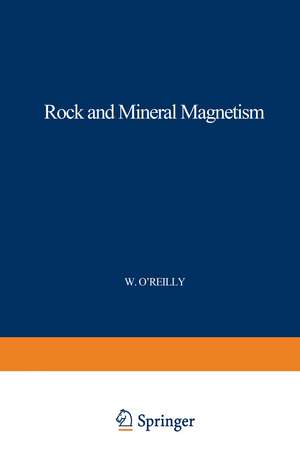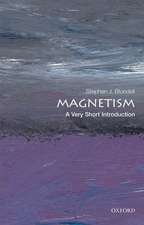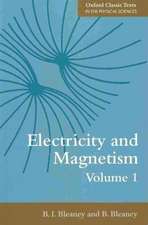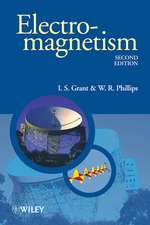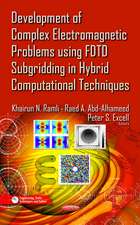Rock and Mineral Magnetism
Autor W. O'Reillyen Limba Engleză Paperback – 28 apr 2012
Preț: 384.09 lei
Nou
Puncte Express: 576
Preț estimativ în valută:
73.51€ • 75.93$ • 61.17£
73.51€ • 75.93$ • 61.17£
Carte tipărită la comandă
Livrare economică 26 martie-09 aprilie
Preluare comenzi: 021 569.72.76
Specificații
ISBN-13: 9781468484700
ISBN-10: 1468484702
Pagini: 236
Ilustrații: XII, 220 p. 24 illus.
Dimensiuni: 152 x 229 x 12 mm
Greutate: 0.32 kg
Ediția:Softcover reprint of the original 1st ed. 1984
Editura: Springer Us
Colecția Springer
Locul publicării:New York, NY, United States
ISBN-10: 1468484702
Pagini: 236
Ilustrații: XII, 220 p. 24 illus.
Dimensiuni: 152 x 229 x 12 mm
Greutate: 0.32 kg
Ediția:Softcover reprint of the original 1st ed. 1984
Editura: Springer Us
Colecția Springer
Locul publicării:New York, NY, United States
Public țintă
ResearchCuprins
1 Introduction to the magnetism of rocks.- 1.1 Rocks as magnetic information stores.- 1.2 The recorded information.- 1.3 Rock and mineral magnetism.- 1.4 Magnetism—some preliminaries.- 2 Magnetic minerals in rocks.- 2.1 The magnetic mineral systems.- 2.2 The magnetic mineralogy of igneous rocks.- 2.3 The magnetic mineralogy of sediments.- 2.4 The magnetic mineralogy of extra-terrestrial materials.- 2.5 Summary.- Selected bibliography.- 3 The atomic basis of magnetism.- 3.1 The electron spin; the transition elements.- 3.2 Exchange.- 3.3 Curie temperatures of spinel oxides.- 3.4 Magnetocrystalline anisotropy.- 3.5 Induced anisotropy.- 3.6 Categories of magnetic behaviour.- 3.7 Summary.- Selected bibliography.- 4 The magnetization process.- 4.1 The demagnetizing field—shape anisotropy.- 4.2 Domains and domain walls.- 4.3 The magnetization process.- 4.4 The time-dependence of magnetization—equilibrium and thermal agitation.- 4.5 Summary.- Selected bibliography.- 5 Thermoremanent magnetization.- 5.1 The mechanism—definitions of blocking temperature.- 5.2 TRM models.- 5.3 Thermal demagnetization—partial TRM.- 5.4 Self-reversed TRM.- 5.5 Summary.- Selected bibliography.- 6 Other remanence-inducing mechanisms.- 6.1 Mechanisms in nature.- 6.2 Mechanisms in the laboratory.- 6.3 Summary.- Selected bibliography.- 7 Magnetic properties of titanomagnetites and titanomaghemites.- 7.1 The titanomagnetites.- 7.2 The titanomaghemites.- 7.3 Multiphase products of the oxidation of titanomagnetite.- 7.4 Summary.- 8 Magnetic properties of other mineral systems.- 8.1 Haematite.- 8.2 The haematite-ilmenite solid solution.- 8.3 The pyrrhotites.- 8.4 Goethite.- 8.5 Iron.- 8.6 Alteration products of non-magnetic minerals.- 8.7 Summary.- 9 Applications of rock and mineral magnetism.- 9.1Introduction.- 9.2 Physical models—the acquisition and removal of weak field remanences.- 9.3 Determination of the composition, concentration and microstructure of the magnetic mineral fraction in a rock (or other material).- 9.4 Connections in planetary physics—the magnetization of planetary crusts.- 9.5 Summary.
